Table of Contents
Team Dashboards Overview
Monitor team progress, manage risk, and support agile retrospectives using the real-time insights provided by Team Dashboards.
Team Dashboards provide your team with a comprehensive, real-time view of operational metrics. These dashboards are designed to help teams identify and resolve quality and delivery risks quickly, while continuously improving both team-level and individual performance.
You can switch between teams and iterations using the menus at the top of the dashboard.
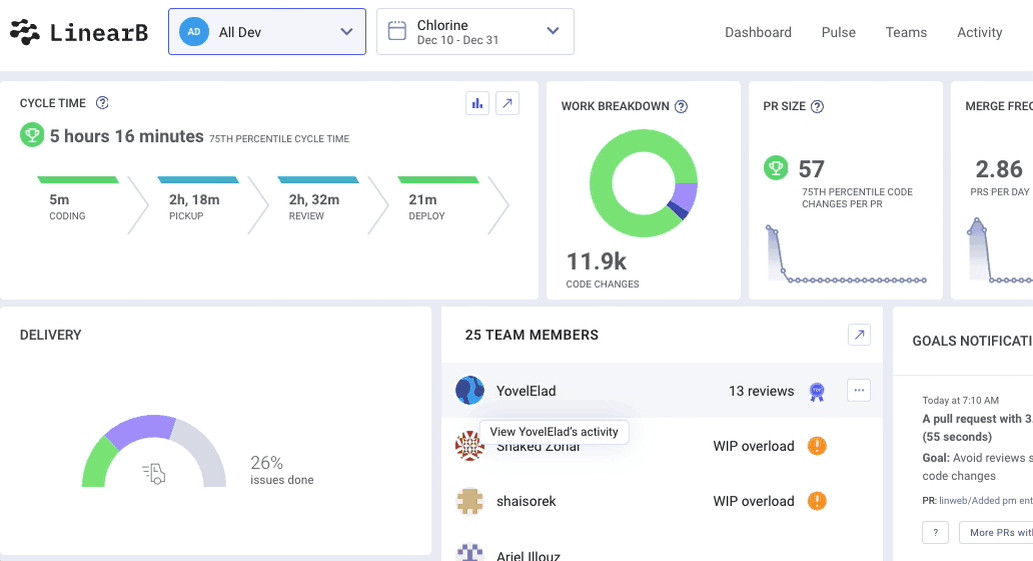

Current Iteration View
The default dashboard view displays your team's activity in the currently active iteration. This operational view focuses on in-flight branches and daily activity.
Cycle Time
Cycle time is displayed as an average or percentile depending on your account settings. You can click on any segment (Coding, Pickup, Review, Deploy) to view the branches contributing to that part of the cycle. Click  to view the full list of active branches in the Activity tab.
to view the full list of active branches in the Activity tab.
📘 Learn how LinearB calculates Cycle Time
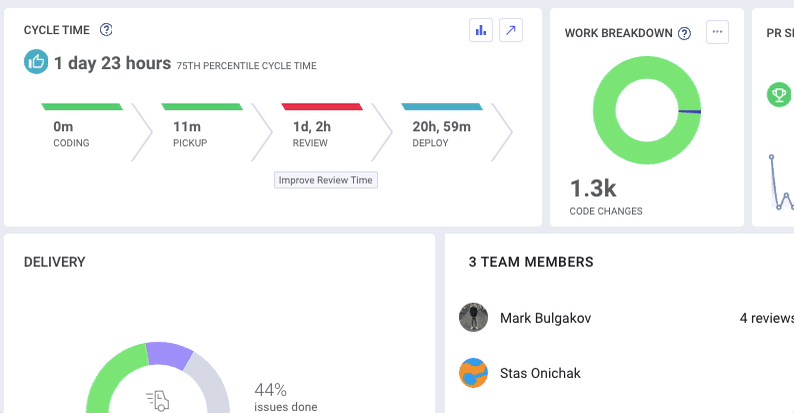
Work Breakdown
This graph visualizes lines of code added or changed during the current iteration or week. Click the graph icon to view your work breakdown from previous iterations. You can also drill down into the full list of branches by clicking the branch list icon.
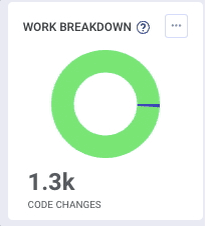
Click  to view all branches that sum up this tab.
to view all branches that sum up this tab.
Breakdown categories:
- New Work – Newly added lines of code
- Refactor – Changes to code older than 21 days
- Rework – Changes to code less than 21 days old
Customizing Top Widgets
You can personalize the three widgets in the top-right corner of your dashboard to spotlight the metrics that matter most to your team. Click the pencil icon on any of these widgets to open the selection panel and choose up to three metrics to display. This allows your team to stay focused on the goals and KPIs that align with your current priorities.
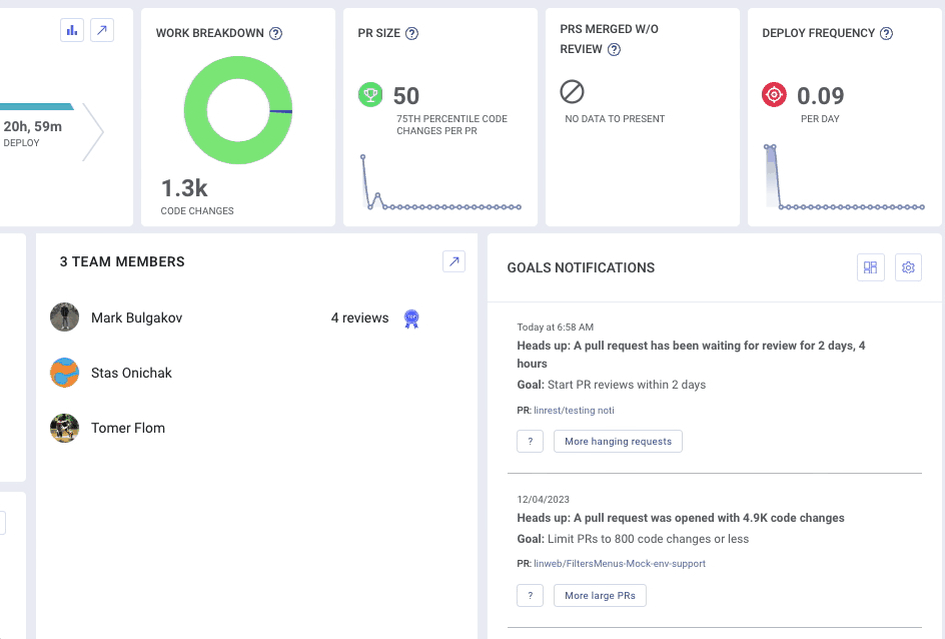
Team Members
This section lists all team members. If individual metrics are enabled, clicking on a team member will show their activity and the branches they worked on within the current time range. You can expand the widget using the arrow in the corner to view more detailed individual metrics.
🔗 Learn how to enable or disable individual metrics
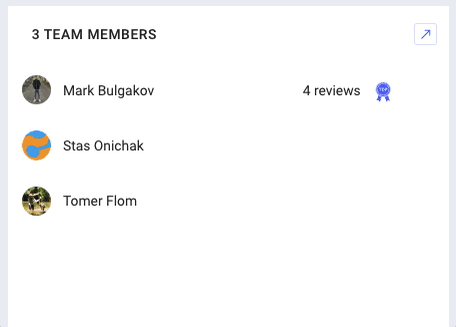
- Burnout Alert
 — Triggered when a developer has worked 90% of days in a sprint (starting at day 6)
— Triggered when a developer has worked 90% of days in a sprint (starting at day 6) - WIP Overload
 — Appears when a developer has more than six active branches.
— Appears when a developer has more than six active branches. - Top Reviewer
 — Highlights the team member who has completed the most PR reviews in the current iteration.
— Highlights the team member who has completed the most PR reviews in the current iteration.
Goals and Notifications
Teams can configure goals based on
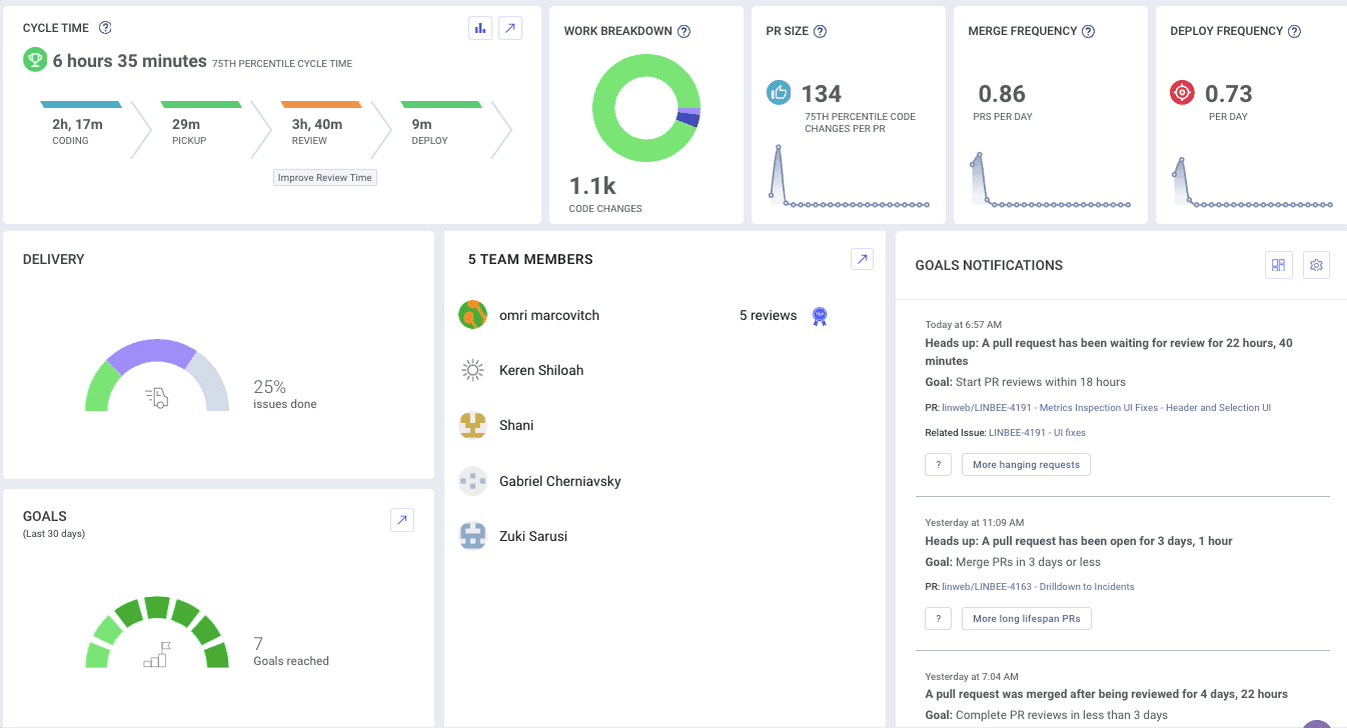
Goals
Hover over any flag to see the goal details. Green flags indicate goals that are being reached; orange and red flags indicate goals that are not yet being reached.
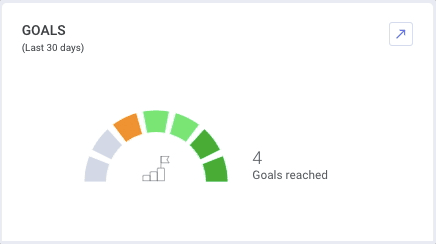
Goals Notifications
Goal-related notifications can be sent to your Slack or MS Teams channels and are also visible on the dashboard. Click the gear icon in this module to customize your team goals or view the full Team Goals Report. Click on an individual goal to see additional branches that may be in danger of breaching this goal.
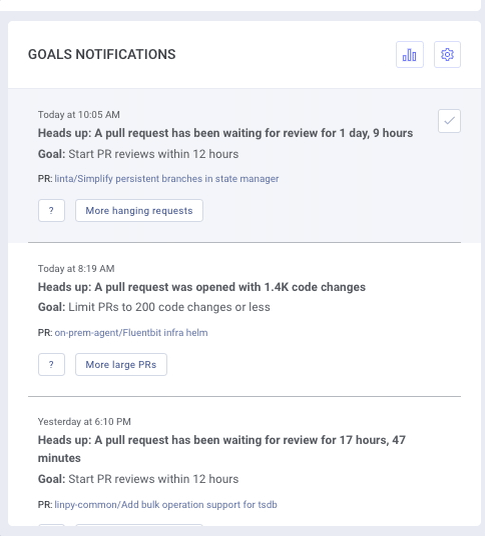
Delivery
Delivery metrics are displayed when your team links a project management (PM) board through the team settings. These insights show the percentage of issues across your sprint or Kanban board that are categorized as To Do, In Progress, or Done. Click on any segment to explore related ticket activity in LinearB’s Pulse view, offering additional context and traceability.
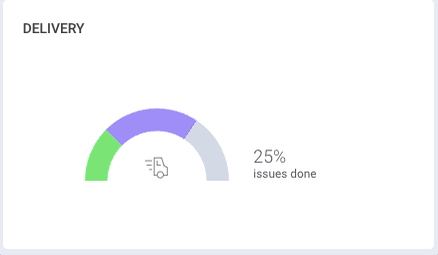

Retrospect Iteration View
The Retrospect view is designed to support sprint or iteration reviews by offering a more analytical perspective. Unlike the operational nature of the Current Iteration view, this mode provides historical insights to help teams evaluate their performance across the recently completed iteration. It includes high-level metric summaries, trend charts, and data that highlight opportunities for improvement or areas to celebrate.
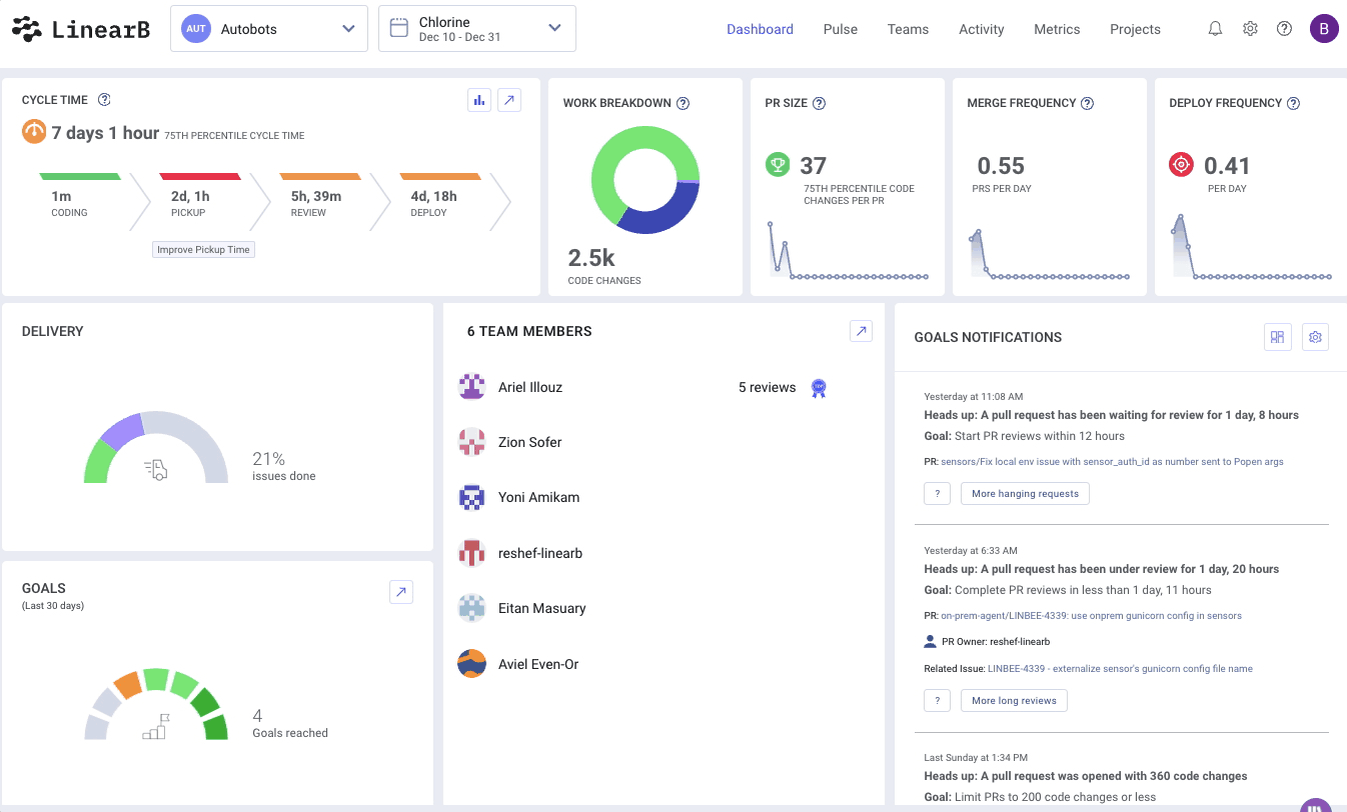
Metric Summaries and Trends
- Reviews – Displays the total number of pull request reviews completed during the iteration, along with the average number of comments per review over time.
- Deployment Frequency – Shows the number of deploys that occurred per day and the total number of deploys detected throughout the iteration.
These insights help teams reflect on what went well, identify areas for improvement, and decide which practices to carry forward into future iterations.

Related Resources
How did we do?
Team Dashboards - Team Only Mode
Teams Tab - Features and Definitions